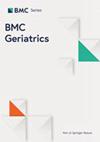Association between polypharmacy and 2-year outcomes among Chinese older inpatients: a multi-center cohort study
IF 3.4
2区 医学
Q2 GERIATRICS & GERONTOLOGY
引用次数: 0
Abstract
The escalating global prevalence of polypharmacy presents a growing challenge to public health. In light of this issue, the primary objective of our study was to investigate the status of polypharmacy and its association with clinical outcomes in a large sample of hospitalized older patients aged 65 years and over. A two-year prospective cohort study was carried out at six tertiary-level hospitals in China. Polypharmacy was defined as the prescription of 5 or more different medications daily, including over-the-counter and non-prescription medications. Baseline polypharmacy, multimorbidity, and other variables were collected when at admission, and 2-year outcomes were recorded by telephone follow-up. We used multivariate logistic regression analysis to examine the associations between polypharmacy and 2-year outcomes. The overall response rate was 87.2% and 8713 participants were included in the final analysis. The mean age was 72.40 years (SD = 5.72), and women accounted for 42.2%. The prevalence of polypharmacy among older Chinese inpatients is 23.6%. After adjusting for age, sex, education, marriage status, body mass index, baseline frailty, handgrip strength, cognitive impairment, and the Charlson comorbidity index, polypharmacy is significantly associated with frailty aggravation (OR 1.432, 95% CI 1.258–1.631) and mortality (OR 1.365, 95% CI 1.174–1.592), while inversely associated with readmission (OR 0.870, 95% CI 0.764–0.989). Polypharmacy was associated with a 35.6% increase in the risk of falls (1.356, 95%CI 1.064–1.716). This association weakened after adjustment for multimorbidity to 27.3% (OR 1.273, 95%CI 0.992–1.622). Polypharmacy was prevalent among older inpatients and was a risk factor for 2-year frailty aggravation and mortality. These results highlight the importance of optimizing medication use in older adults to minimize the risks associated with polypharmacy. Further research and implementing strategies are warranted to enhance the quality of care and safety for older individuals exposed to polypharmacy. Chinese Clinical Trial Registry, ChiCTR1800017682, registered 09/08/2018.多药治疗与中国老年住院患者两年预后的关系:一项多中心队列研究
全球多重用药的流行率不断攀升,给公共卫生带来了日益严峻的挑战。有鉴于此,我们研究的主要目的是调查65岁及以上住院老年患者的多重用药情况及其与临床结果的关系。我们在中国六家三级甲等医院开展了一项为期两年的前瞻性队列研究。多重用药的定义是每天开 5 种或 5 种以上不同的药物,包括非处方药和非处方药。在入院时收集基线多药、多病和其他变量,并通过电话随访记录两年后的结果。我们采用多变量逻辑回归分析来研究多重用药与 2 年疗效之间的关系。总回复率为 87.2%,8713 名参与者被纳入最终分析。平均年龄为 72.40 岁(SD = 5.72),女性占 42.2%。中国老年住院患者的多药使用率为 23.6%。在对年龄、性别、教育程度、婚姻状况、体重指数、基线虚弱程度、手握力、认知障碍和 Charlson 合并症指数进行调整后,多重用药与虚弱加重(OR 1.432,95% CI 1.258-1.631)和死亡率(OR 1.365,95% CI 1.174-1.592)显著相关,而与再入院(OR 0.870,95% CI 0.764-0.989)呈反相关。多药治疗与跌倒风险增加 35.6% 相关(1.356,95%CI 1.064-1.716)。在对多病症进行调整后,这种关联性减弱为 27.3%(OR 1.273,95%CI 0.992-1.622)。多药治疗在老年住院患者中很普遍,是导致两年虚弱加重和死亡的风险因素。这些结果凸显了优化老年人用药以最大限度降低多重用药相关风险的重要性。有必要开展进一步研究并实施相关策略,以提高对使用多种药物的老年人的护理质量和安全性。中国临床试验注册中心,ChiCTR1800017682,注册日期:2018年08月09日。
本文章由计算机程序翻译,如有差异,请以英文原文为准。
求助全文
约1分钟内获得全文
求助全文
来源期刊

BMC Geriatrics
GERIATRICS & GERONTOLOGY-
CiteScore
5.70
自引率
7.30%
发文量
873
审稿时长
20 weeks
期刊介绍:
BMC Geriatrics is an open access journal publishing original peer-reviewed research articles in all aspects of the health and healthcare of older people, including the effects of healthcare systems and policies. The journal also welcomes research focused on the aging process, including cellular, genetic, and physiological processes and cognitive modifications.
 求助内容:
求助内容: 应助结果提醒方式:
应助结果提醒方式:


